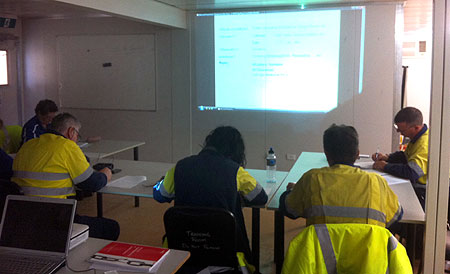Training manual
Requirements and Privileges of an AROC
- The certificate is regulated by the Civil Aviation Safety Authority, CASA. Our flying school is authorised to issue a certificate to those of it's clients who reach a required level of proficiency in both a written and practical test.
- An AROC must be held by any flight radiotelephone operator who communicate with aircraft.
- An AROC remains valid in perpetuity unless specifically withdrawn by CASA for any breaches of the rules and regulations by an operator.
- While ownership of a radio system used for air ground communication does not require the owner to hold a certificate, an operator of the system must be licensed.
- Radio operators are prohibited from making transmissions which
- Are not related to aircraft operational needs
- Are profane or obscene
- Are false or intended to deceive
- Improper use of call signs
- Involve personal or private matters
- Involve the propagation of information exchanged between other stations heard on the same frequency
The Radio Telephone System

The historical development of aeroplanes and radio has occurred simultaneously. Good communications has been a major factor in the development of aviation.
Most aeroplanes are equipped with at least one high quality communications set. It will operate within the Very High Frequency (VHF) band. Such a set (known as VHFCOM) is both a transmitter and receiver and is very simple to operate.
Components
Connected to the radiotelephone sets are:
- A microphone for transmitting
- Speakers and (often) headphones for listening to the reception
- An audio selector panel (in some aircraft) to connect the various Navigation and Communication radio sets to the speaker or headphones, and the COM sets (if more than one) to the microphone
- Externally fitted are a transmitter and receiver antenna And finally, fuses and circuit breakers which are able to blow if an over voltage or short circuit occurs.
Using the Radio
- First of all, check that power is being supplied to the radio from the battery either through a master electrical switch or something similar (you'll be surprised how many people, including many red-faced pilots forget this!)
- Switch the unit on. This is usually done by the volume knob which has an OFF detent. Rotate the knob past the detent and the radio unit will come on.
- Select the desired frequency (be sure it is correct, or you might be broadcasting important information to no one!)
- Select the appropriate volume to desired level and squelch level to cut out undesired background noise.
- Check the microphone is plugged in correctly.
Squelch
The function of Squelch is to eliminate unwanted weak signals that cause background noise. This noise makes
it very difficult to hear desired stronger signals.
To adjust the squelch manually
- Turn the Squelch up high (i.e. Clockwise) until background noise is heard
- Rotate squelch knob until anticlockwise until noise just disappears.
- Turning the squelch all the way down may also cut out the signal we want to hear as well as the unwanted noise if we are not careful.
Learn about range of radio signals.
The full training manual with CASA forms and documentation is accessible online to registered students.
